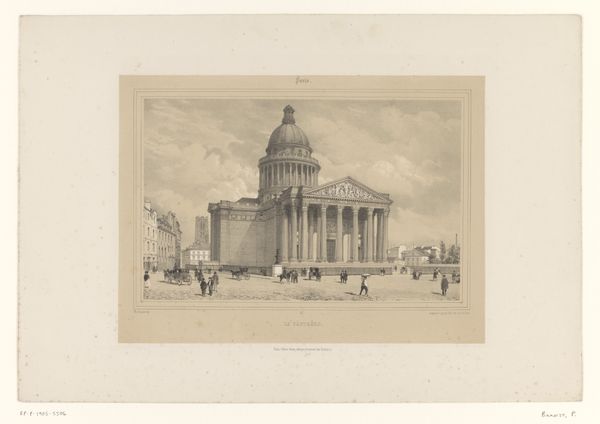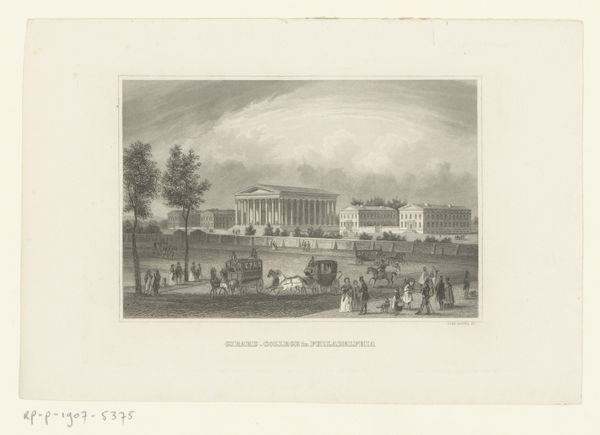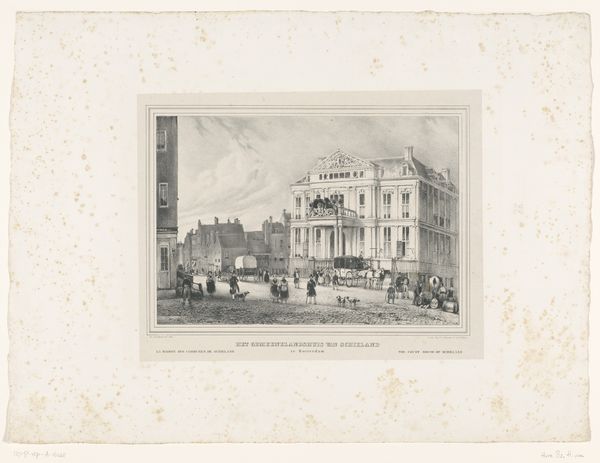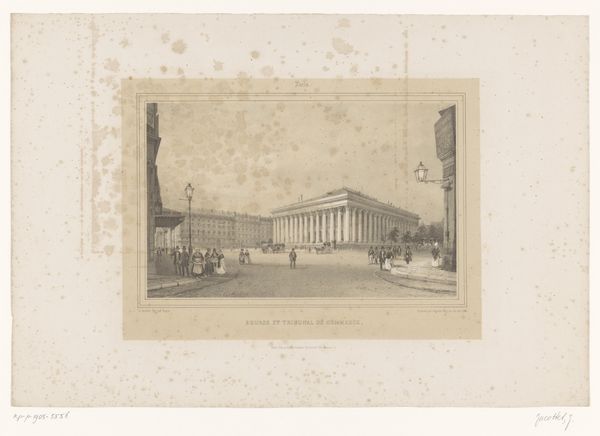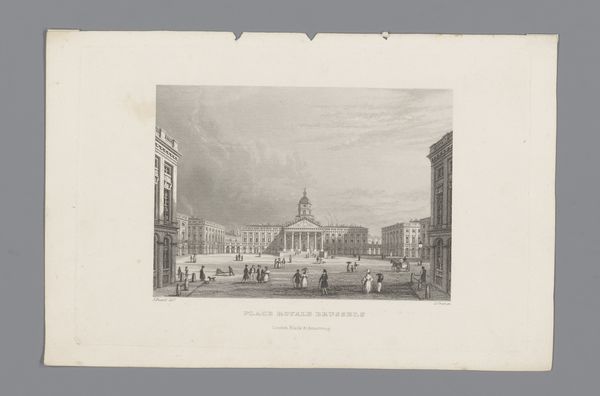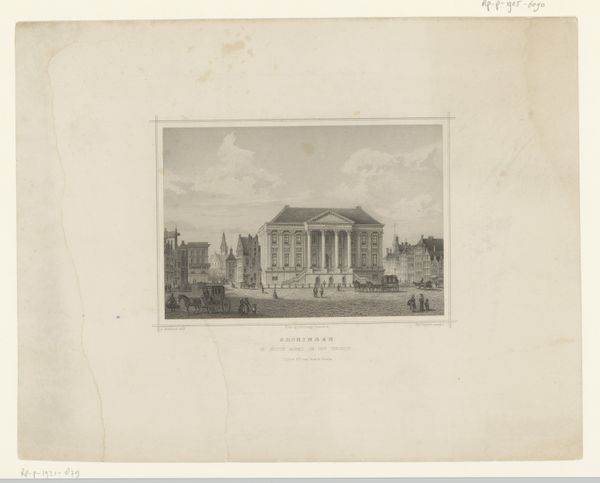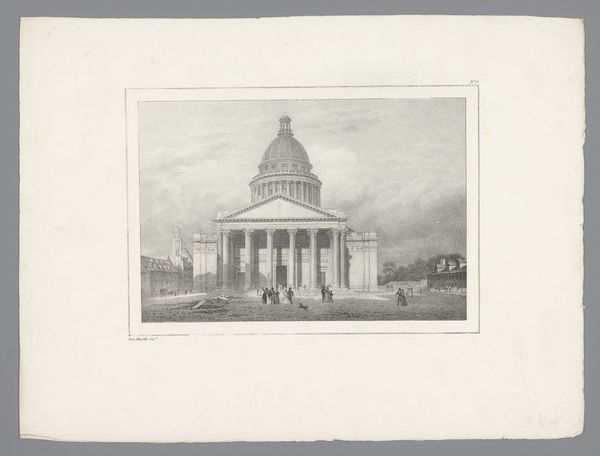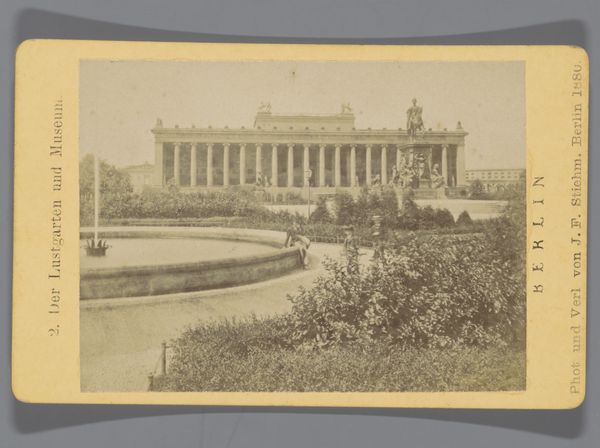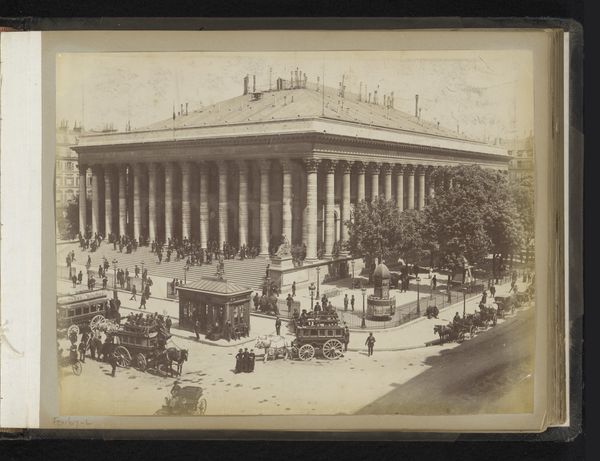
drawing, lithograph, print, paper
#
drawing
#
neoclacissism
#
lithograph
# print
#
landscape
#
perspective
#
paper
#
line
#
cityscape
#
realism
Dimensions: height 185 mm, width 275 mm
Copyright: Rijks Museum: Open Domain
Curator: Here we have a lithograph titled "Capitool in Washington," dating from 1843 to 1876, created by Carel Christiaan Antony Last. It resides here with us at the Rijksmuseum. Editor: It's impressively grand! Imposing, almost, with that perfect symmetry and those looming columns. Makes you feel like you should stand up straight just looking at it. Curator: Neoclassicism aspired to precisely that effect, Editor. Architects and artists employed those very design choices to inspire feelings of civic virtue, order, and a connection to the perceived grandeur of the ancient world. Look how the dome imitates Roman architecture. It signifies power, but a power supposedly rooted in reason and law. Editor: So, not just showing off. Though, I bet some folks at the time felt a little differently. It's interesting how even in this printed form, the perspective emphasizes the building's hugeness relative to the tiny figures populating the scene. They're like ants before an empire, all drawn in a stark, almost documentary style. There’s definitely a statement being made here about the individual versus the state. Curator: Indeed. The artist employs perspective and scale not simply to depict the Capitol, but to imbue it with symbolic weight. The very *style*, down to the crisp lines, communicates permanence and unwavering authority. In terms of visual rhetoric, Neoclassicism borrows heavily from the perceived “rationality” of classical art, promoting a vision of civilization in an almost self-fulfilling manner. What you see reinforces what they wanted you to believe. Editor: I get the impulse—that need for grounding amidst so much flux. All the people milling around down front really give me that feeling of being on the brink of enormous change. Though, I can’t shake off some sadness too; maybe because I can imagine what the people who're not present – people being excluded or exploited as the grand republic rises – might have to say. Art communicates on so many levels. It is, among other things, a trigger for personal contemplation on history. Curator: Yes. Visual symbols often carry complex emotional and psychological weight over time. It is vital to understand art through diverse prisms of history, memory, and lived experience. Editor: A monument both concrete and deeply conceptual, wouldn’t you agree?
Comments
No comments
Be the first to comment and join the conversation on the ultimate creative platform.
